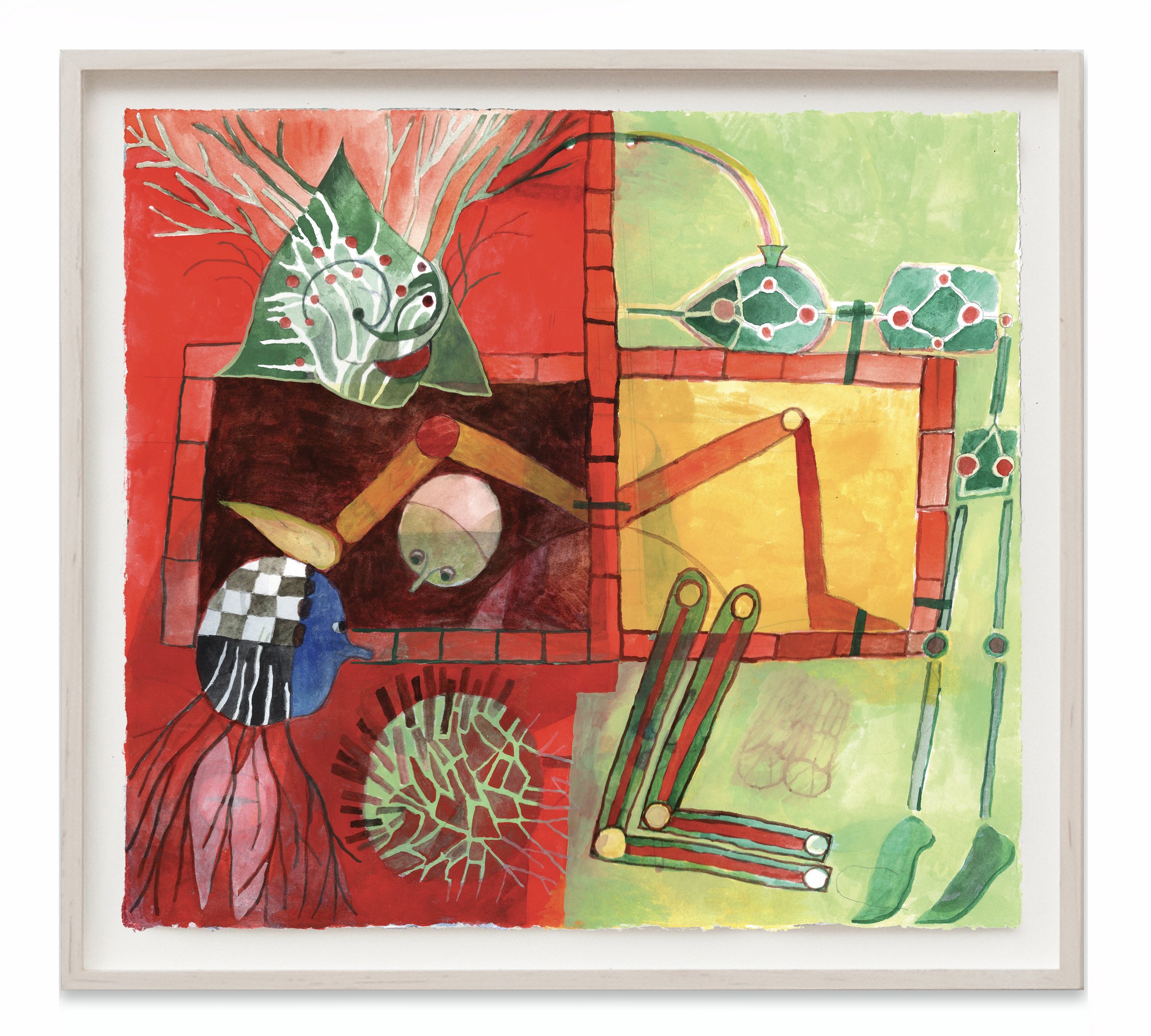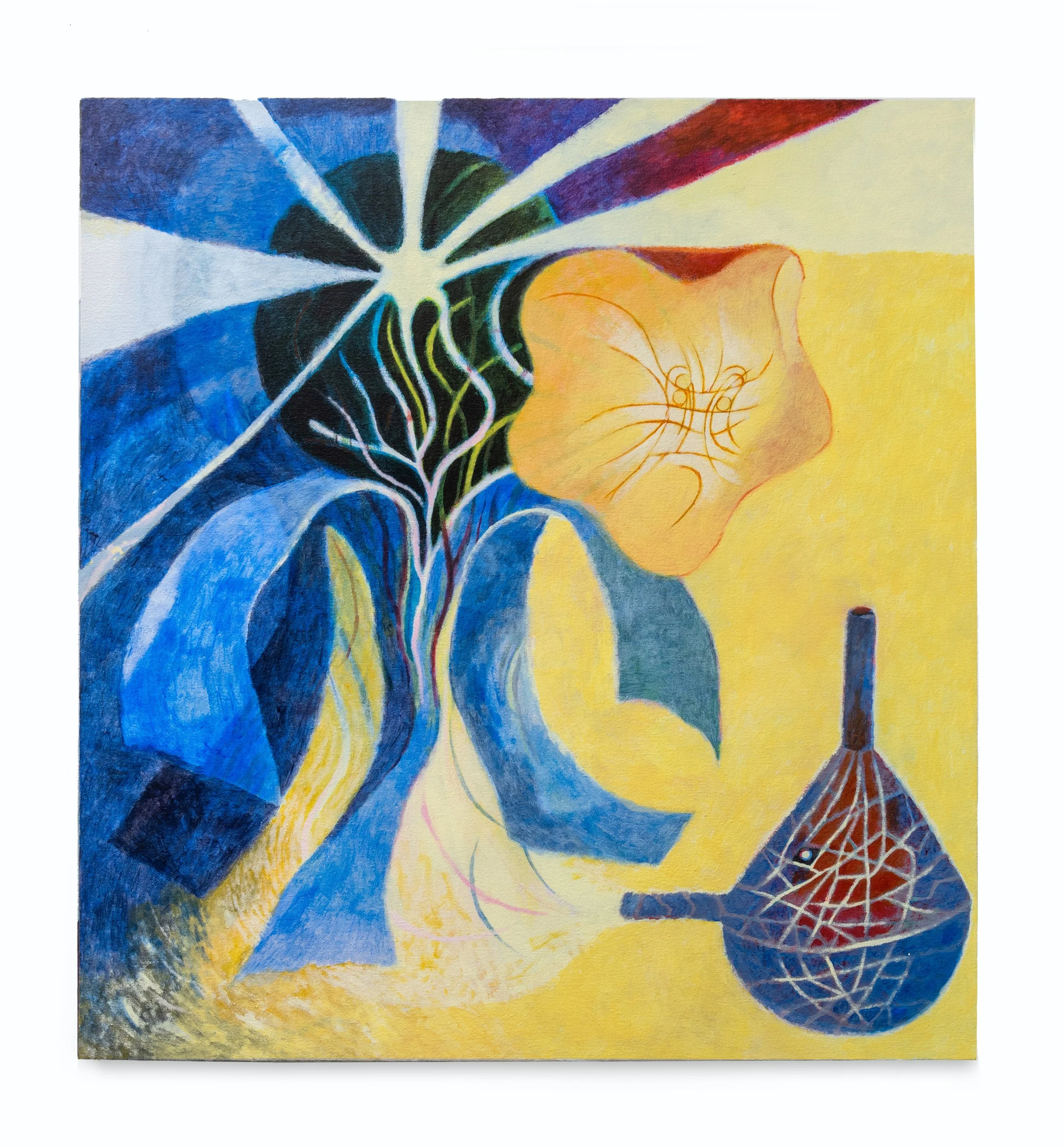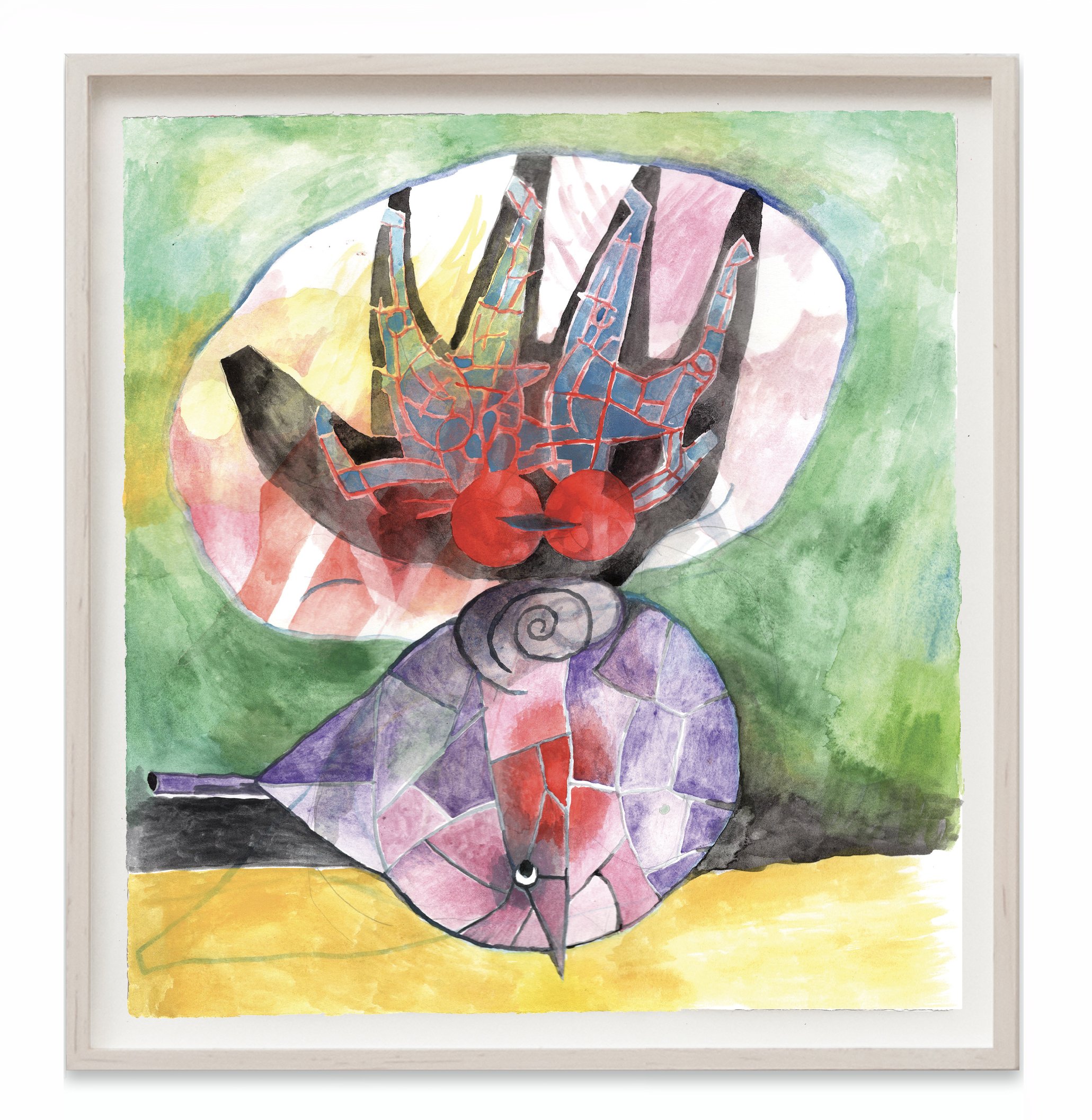Gretta Johnson Solo Show
Nov 5 - Dec 17, 2023
Tin Man’s Dream
Curated by Tappeto Volante
Opening on November 5th, 2023, from 5 PM to 8 PM
On view until December 17th, 2023
Gretta Johnson’s Tin Man’s Dream
By Joey Frank
On her trip to Oz, Dorothy meets the Scarecrow first and then the Tin Man. The Scarecrow opines, if he only had a brain. Next she meets the Tin Man, who wishes he had a heart. To my logical child mind, I remember thinking, well then the Tin Man must have a brain already, but what could that look like? His head seems so empty, maybe a big wad of pink chewing gum stuck to the inside of its tin cranium soaked in motor oil? Gretta Johnson’s paintings in the exhibition at Tappeto Volante, “Tin Man’s Dream” are not literal answers to this question, but they aren’t a surrealistic depiction of dreams either. The lattice worked lines are neural nets, seeming to suggest what a map of these electrical impulses could be, the function of which, to animate the Tin Man with thought.
Gretta wrote about a mood of, “the whole body having been exiled, the parts exhumed from memory’s heap are put into action so that a man can come into being.” The gathering of pieces goes right back to the lyric of the Tin Man, “when a man’s an empty kettle, he should be on his Mettle, and yet I’m torn apart…” In the show’s titular work, Tin Man’s Dream, the lines are stitches, or even weld seams to assemble the vessel for a liquid thought that itself has a network of red lines. In the watercolor painting, Yellow Road (encounters), these neural pathway lines form pixel transitions dripping off into droplets and rivulets. There’s a mysterious children’s book quality, of lines being a spell cast, drawing parts together in movement of the eye across a surface - reuniting what had been banished.
Gretta Johnson, "Yellow Road", 2023, Watercolor on paper, 16 × 16 in
Gretta Johnson, "Compartments", 2023, Watercolor on paper, 16 × 16 in
Gretta Johnson, "Yellow Road (parts)", 2023, Watercolor on paper, 16 × 16 in
Gretta Johnson, "In Parts", 2023, Acrylic on canvas, 55 × 30 in
Gretta Johnson, "Falling Together", 2023, Acrylic on canvas, 55 × 30 in
Gretta Johnson, "Field Vision", 2023, Acrylic on canvas, 55 × 30 in
Gretta Johnson, "Insomnia", 2023, Acrylic on linen, 32 × 36 in
Gretta Johnson, "Incoming", 2023, Watercolor on paper, 15 × 12 in
Gretta Johnson, "Shared Spirit", 2023, Acrylic on canvas, 28 × 30 in
Gretta Johnson, "Cold Head", 2023, Acrylic on canvas, 12 × 16 in
Gretta Johnson, "First Breath", 2023, Acrylic on canvas, 28 × 30 in
Gretta Johnson, "Time’s Release", 2023, Acrylic on canvas, 40 × 30 in
Gretta Johnson, "Compartments", 2023, Watercolor on paper, 16 × 16 in
Gretta Johnson, "Vision", 2023, Watercolor on paper, 15 × 12 in
Gretta Johnson, "Tin Man’s Dream", 2023, Watercolor on paper, 16 × 16 in
Gretta Johnson, "The Ear", 2023, Acrylic on linen, 32 × 36 in

































